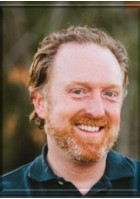
Say What? Diagnosing & Treating the Seven Types of Jargon Overuse
At the end of this presentation, participants should be able to:
- Describe why jargon is used and why it is problematic
- Recognize the seven types of jargon that are used in clinical practice and provide examples of each
- Implement simple word swaps in our written and verbal communication that increase likelihood of being understood by our patients
None of us went into medicine to confuse people. Yet studies on our use of jargon – the technical terminology of a given group – reveal that we consistently do precisely that. While physicians overwhelmingly agree that using plain language is essential for effective communication, and we rate ourselves highly in our ability to do so, it has been shown that we use terminology not understood by our patients as often as seventy times per encounter. Clearly we have jargon oblivion - we think we are speaking clearly but we aren't understood.
In this session, we will identify seven categories of jargon and learn strategies to avoid using in the future. Along the way, we'll have a magician explain how he does a complicated magic trick, review classic clips from medical television shows with our jargon identification lenses on, and practice simple word swaps that can increase the chances of us being understood.
Phoenix Children’s employees / PCMG providers: view a recording of this session here.
About this presenter:
Michael Pitt, MD
Pediatric Hospitalist
University of Minnesota, M Health Fairview - Minnesota
Dr. Mike Pitt is a Professor of Pediatrics at the University of Minnesota where he is an Associate Residency Program Director, Associate Chair of Faculty Development and Strategic Planning, and the Fellowship Director for hospital medicine. A winner of multiple teaching awards, Dr. Pitt speaks across the country with a primary focus of improving the way medical providers communicate with each other and their patients. He has authored over 100 peer-reviewed manuscripts and textbook chapters in leading medical journals and has developed curricula used at hundreds of universities in more than 20 countries. As an award-winning professional magician, he has performed for Fortune 500 Companies all over the world and has taught over 3,500 pediatricians how to think like a magician at the bedside to improve rapport and increase diagnostic yield.
